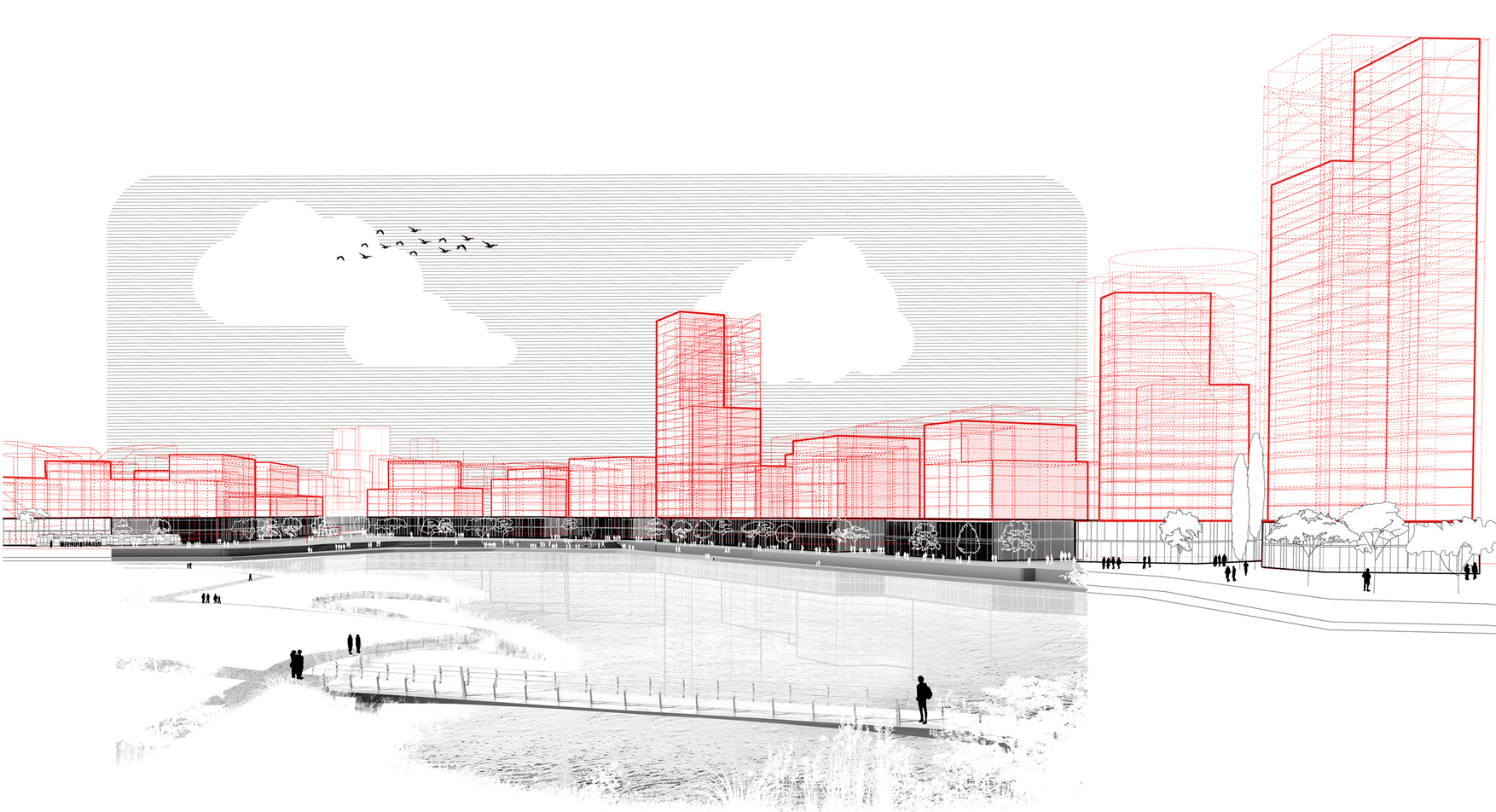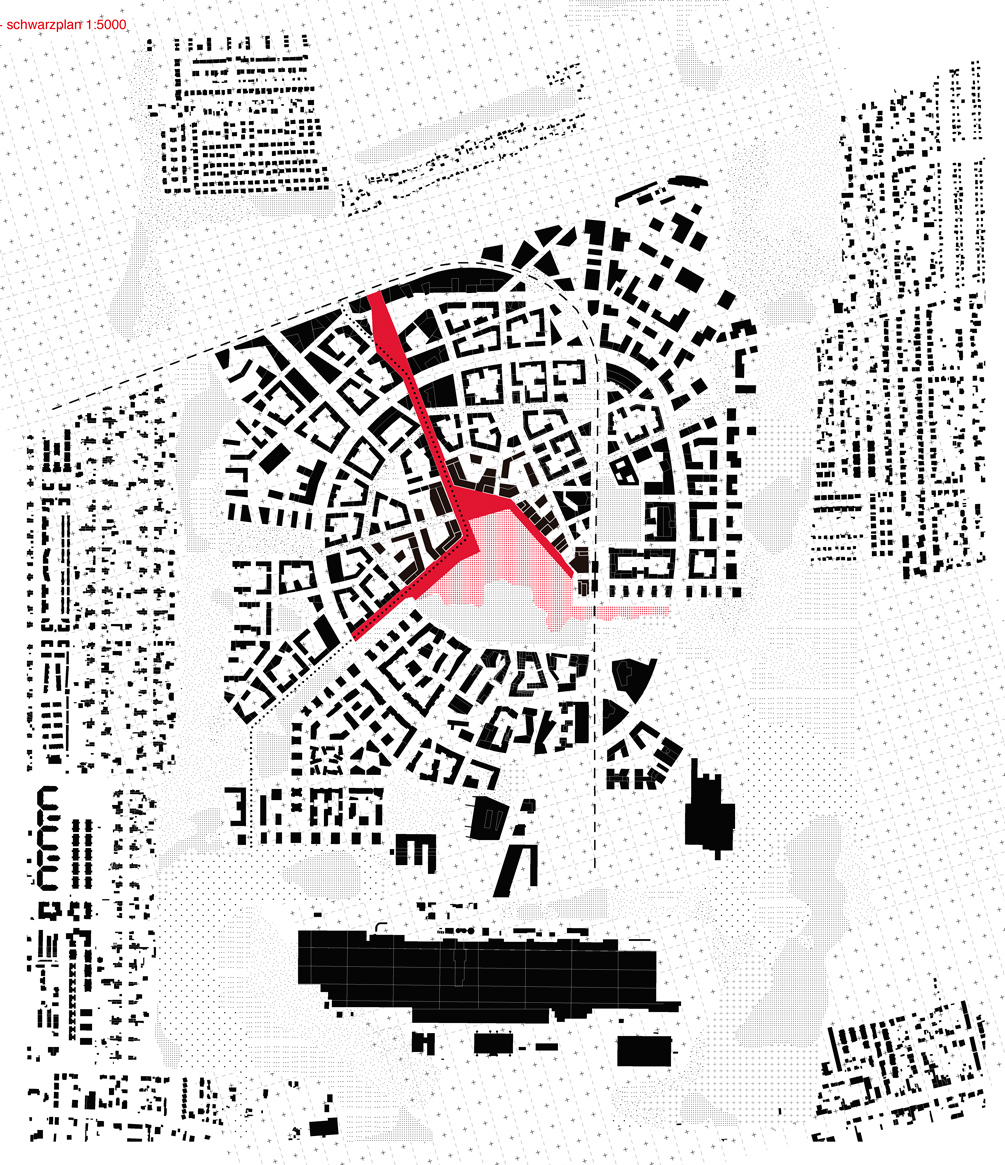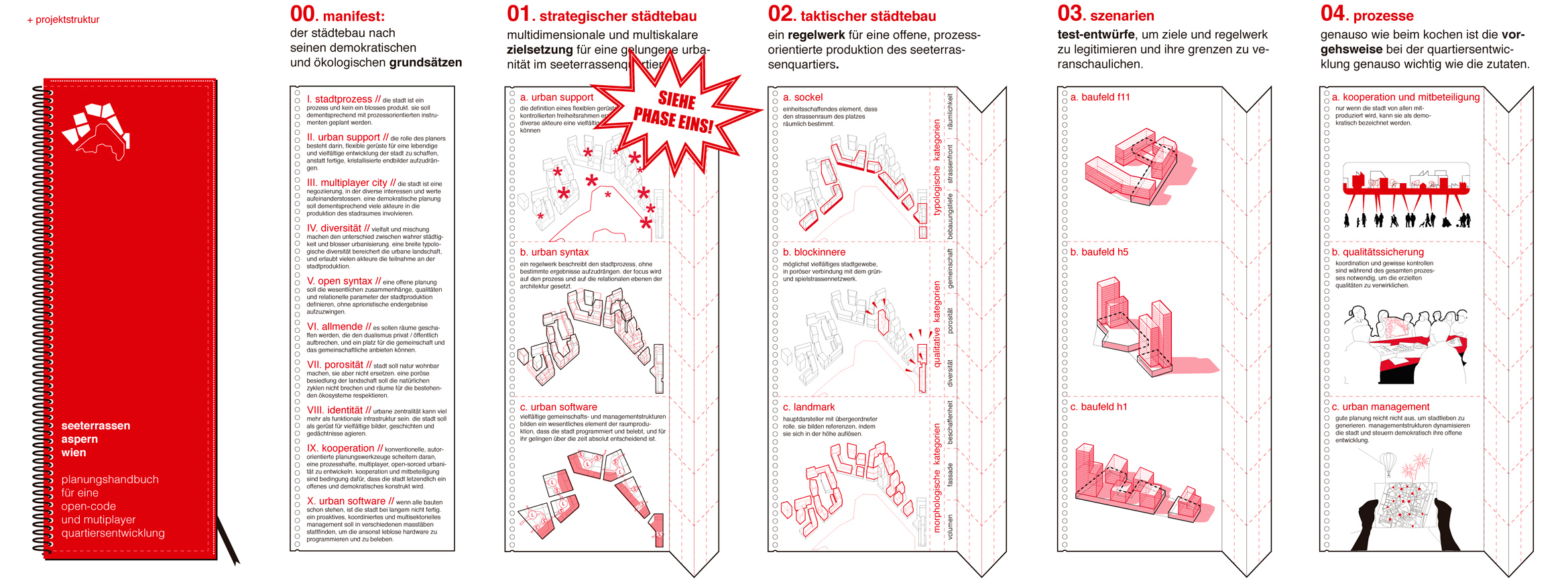SEETERRASSEN ASPERN
Two-phase competition for the definition of a new city centre in Aspern
Vienna, 2018
FINALIST
The competition was carried out in two phases and called for architects to propose ideas for the definition of a new city centre in Aspern, envisioning the proposed additions as the new facade of the city towards the lake. The winning team would be required hereafter to write a normative book, which should establish rules and general, unifying characteristics for the buildings while remaining sufficiently open so as to allow subsequent interpretations, in the form of specific architectural projects.
Taking into account this hindmost objective, our proposal entails the formulation of a guidelines handbook, a manifesto that introduces a number of principles for a more democratic and ecological urban planning. The manual encompasses the following topics: city-as-process, urban support, multiplayer city, diversity, open syntax, allmende, porosity, identity, cooperation, and urban software.
A 3×3 matrix defines the structure of the book, three chapters encompassing three sections each:
1. Strategical planning: it defines an approach with multi-scalar objectives that should guarantee the proper functioning of the new neighbourhood, on the basis of three layers that have already been devised and implemented in the first phase of the competition: ‘Urban Support’, ‘Urban Syntax’, and ‘Urban Software’.
 2. Tactical planning: it defines a framework of rules for the creation of an open-code neighbourhood. For the development of this particular scenario, we associate three key elements that define this urban configuration (podium, blocks, and landmarks) with three categories: typological, qualitative, and morphological.
2. Tactical planning: it defines a framework of rules for the creation of an open-code neighbourhood. For the development of this particular scenario, we associate three key elements that define this urban configuration (podium, blocks, and landmarks) with three categories: typological, qualitative, and morphological.
3. Scenographical planning: it defines test projects that should legitimate the validity of the normative framework. Hence we illustrate, up to the architectural scale, three hypotheses that correspond with the required plots (Baufelder F11, H1, H5).
Equally important as defining the aforementioned elements is their management not only before and during but also after its construction. Therefore, our proposal outlines three crucial precepts that should be contemplated in order to ensure that urban development is understood as a continuous process: the creation of a panel of experts that should evaluate and ascertain the quality of the proposals to be implemented (‘Qualitätssicherung’), the collaborative character of urban management, as well as the inclusion of community participation as part of the urban process.
>Authors: Enrique Arenas, Luis Basabe, Luis Palacios.
>Collaborators: Chiara Intreccialagli, Alejandro Fuentes, Benita Tauer, Paula López, Javier Ortiz, Irene Landa, Francisco Balado, Beatriz Alonso, Cristina Vega y Franca Sonntag.
>Model: Gilberto Ruiz Lopes.








